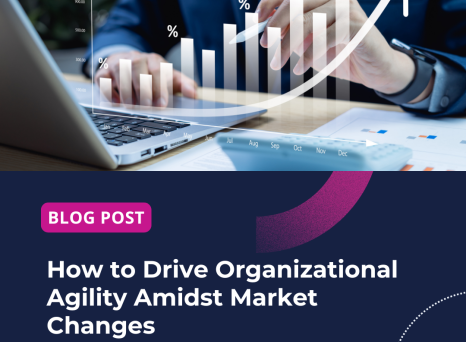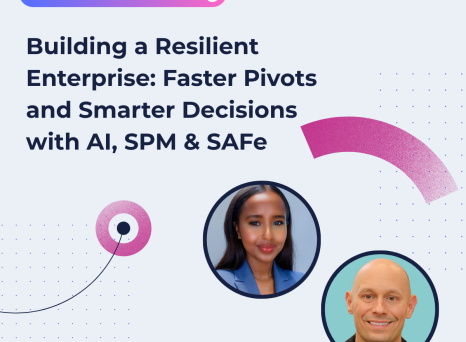There's a common misconception that Agile is only suitable for smaller project management teams.
After all, smaller teams require less handholding and organization. With a single team, it's easier to align priorities and champion more flexible, incremental project delivery.
However, with the right Enterprise Agile framework, you can scale Agile to meet your complex, larger project needs. This includes projects that involve multiple disparate teams or thousands of developers.
The Scaled Agile Framework (SAFe) is one popular example. Released in 2011, this methodology offers structured advice on roles, responsibilities, values, and project planning.
What Makes SAFe Fit for Larger Teams?
SAFe goes beyond the team focus of agile methodologies, like Scrum and Kanban, and introduces some further structure.
Think of it as Agile-aligned with some necessary bureaucracy to ensure projects don't fall off course.
Program Increment (PI) Planning, for instance, is a SAFe practice that offers an added layer of alignment across disparate teams. During a PI Planning meeting, team leaders identify problems, priorities and dependencies. From there, all the teams work together to meet the project goals.
What Are the Alternatives?
Of course, SAFe isn't the only path to Enterprise Agility. Here are four common Enterprise Agile frameworks you could adopt:
1. Large Scale Scrum (LeSS)
This framework expands the one-team Scrum model into a multi-team approach. This means you may have up to eight cross-functional teams. In larger projects, you can adopt LeSS Huge - this could involve thousands of developers working on one single product.
Large Scale Scrum directs the attention away from an individual team's role and to the whole product. These teams still work in one orchestrated sprint model, with one product owner. Only now, they conduct daily Scrum meetings separately within their dedicated teams.
Some organizations may also choose to implement Product Backlog Refinement. This is a less frequent meeting that determines and aligns team priorities.
2. Nexus
The Nexus methodology allows for three to nine Scrum teams, all of which work under one product owner who owns a single product backlog.
The framework aims to maintain Scrum's bottom-up model despite the larger number of teams. Nexus preserves team independence and autonomy, all while adding a layer of accountability. (Which is necessary when coordinating a larger number of people.) An overarching ‘integration team' - made up of the product owner, scrum master, and team members - ensures every sprint and team delivers value and contributes toward the product goals.
Nexus could be the best way to scale agile if you're used to Scrum and are looking for light structure across your cross-operational teams.
3. Scrum@Scale
Jeff Sutherland created Scrum@Scale to tackle the volume, speed, delivery, and communication issues of growing Scrum teams. It follows three empirical values: transparency, inspection, and adaption.
This framework hinges on linear scalability. Essentially, as Scrum teams grow in number, so too does the workload delivery. Unlike other Enterprise Agile frameworks, such as SAFe, Scrum@Scale tries to adopt minimum viable bureaucracy; there are very few governing bodies. This is, of course, in keeping with the Agile principle of quick delivery and fast decision making.
4. Disciplined Agile Delivery (DaD)
The DaD framework supports Lean and Agile methods, meaning organizations can follow a:
- Scrum-based Agile lifecycle
- Kanban-based Lean lifecycle
- Lean Startup-based lifecycle
- Program lifecycle
- Or a combination of the above
The methodology builds upon the Scrum framework, providing further advice and choices around software development design, testing and deployment.
Moreover, project management teams can use it to bolster their SAFe approach. DaD provides strategies for orchestrating your large, disparate project teams, and offers some further advice around scaling your Agile and/or Lean practices.
Making Your Agile at Scale Decision
With all these different Enterprise Agile frameworks, how do you make your decision?
Your choice will depend on your business's overarching strategy, as well as individual project needs, dependencies, and team skills. If you're used to a Scrum framework and you're working with a small number of teams, Nexus or Scrum@Scale may be the right options for you.
If you're looking to adopt the SAFe framework, but worry there isn't enough contextual guidance for you, DaD could be a good fit.
Ultimately, the framework you choose should maximize your productivity. So, don't choose a concept that's too convoluted or outside of your skillset.


